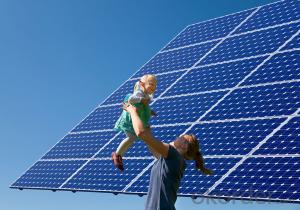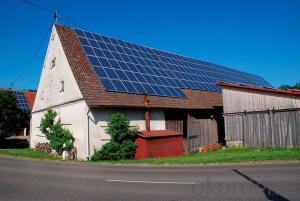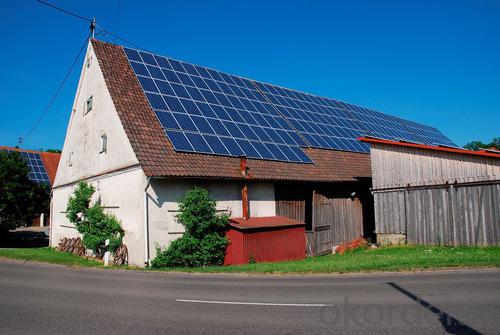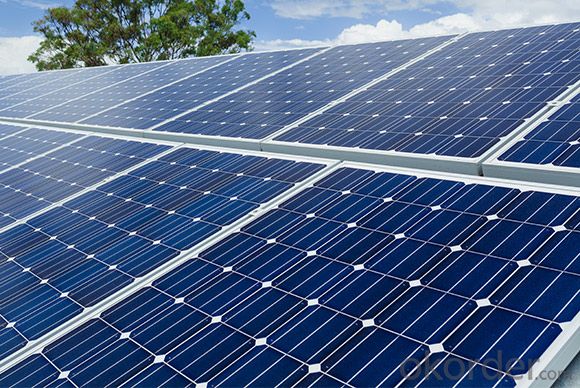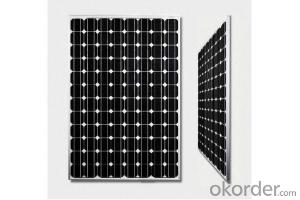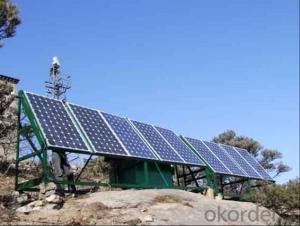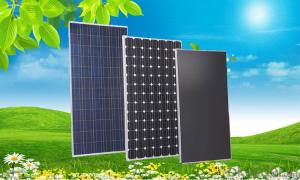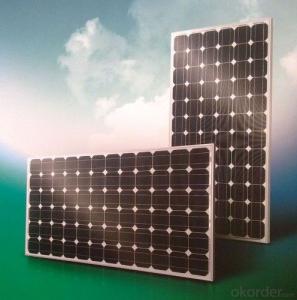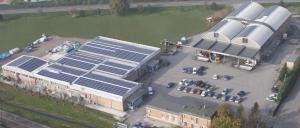Most Efficient CNBM Solar Monocrystalline 156 Series (70-80w) 2023
- Loading Port:
- China main port
- Payment Terms:
- TT OR LC
- Min Order Qty:
- 100000 watt
- Supply Capability:
- 10000000 watt/month
OKorder Service Pledge
OKorder Financial Service
You Might Also Like
Introduction
This installation Manual contains essential information for the electrical and mechanical installation that your must know before installing CUSTOMER PV modules. This also contains safety information you need to be familiar with .All the information described in this manual are the intellectual property of CNBM and based on the technologies and experiences that have been acquired and accumulated in the long history of CUSTOMER. This document does not constitute a warranty, expressed or implied.
CUSTOMER does not assume responsibility and expressly disclaims liability for loss, damage, or expense arising out of in anyway connected with installation, operation, use or maintenance of the PV modules. No responsibility is assumed by CUSTOMER for any infringement of patents or other rights of third parties that may result from use of PV module.
CUSTOMER reserves the right to make changes to the product, specifications or installation manual without prior notice.
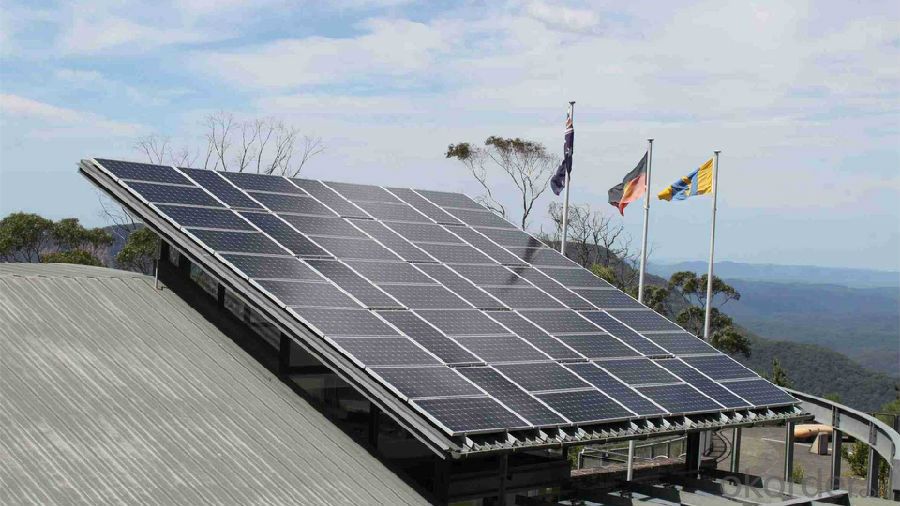
Data sheet
| Characteristics | |
| Max Power Voltage Vmp (V) | 17.2V-17.4V-17.6V |
| Max Power Current Imp (A) | 4.07A-4.32A-4.55A |
| Open Circuit Voltage Voc (V) | 22.2V-22.4V-22.6V |
| Short Circuit Current Isc (A) | 4.35A-4.61A-4.87A |
| Max Power Pm (W) | 70W-75W-80W |
| Temperature Coefficient of Cells | |
| NOCT | 47℃±2℃ |
| Temperature Coefficients of Isc (%/℃) | 0.06% |
| Temperature Coefficients of Voc (%/℃) | -0.32% |
| Temperature Coefficients of Pmp (%/℃) | -0.45% |
| Mechanical Data | |
| Type of Cells (mm) | Mono156*78 Mono156*39 |
| Dimension | 780×670×30mm |
| Weight | 5.9kg |
| NO.of Cells and Connections | 4×9=36/4*18=72 |
| Limits | |
| Operating Temperature | –45°C to +80°C |
| Storage Temperature | –45°C to +80°C |
| Max System Voltage | 700V |
Guarantee
Products Guarantee 2 yrs free from defects in materials and workmanship
Performance Guarantee No less than 90% within 10yrs and no less than 80% within 20yrs Certificates IEC, ISO, CE
FAQ:
1. How long will my inquiry get response?
Your inquiry related to our products or prices will be replied within 24 hours.
2. Can I get professional service and suggestion?
Well-trained and experienced staffs to answer all your questions in fluent English.
3. Do you accept OEM or customized design?
OEM & ODM, any your customized lightings we can help you to design and put into product.
4. What if I need specific design?
Distributorship are offered for your unique design and some our current models.
- Q: what size would the panel be/ I live in the caribbean so plenty of sun!
- a minimum of 4000 watts, 5KW may well be extra desirable and you do choose an inverter and batteries and in all hazard a variable frequency force till the pump motor is rated for DC which I doubt. suited answer is touch a close-by electrician to do the artwork.
- Q: How much energy can solar panels generate?
- The amount of energy solar panels can generate depends on various factors such as the size and efficiency of the panels, the location and orientation of the installation, and the amount of sunlight available. On average, a typical solar panel can generate about 250 to 400 watts per hour. However, larger solar installations or those with higher efficiency panels can generate several kilowatts or even megawatts of energy, which is enough to power homes, businesses, or even entire cities.
- Q: I want to get a solar panel to run a fan (or two) for swamp coolers.I'm not looking to power 20box fans, just maybe some of those auto fans.What the heck kind of panel do I need? What is a power inverter and what does it do?Will I lose all my power if I use a 00' extension cord?How do I choose what I'm going to need?
- Solar panels turn sunlight into direct current electricity usually at 2, 24, or 36v. You could probably have a very simple system with just a panel and a few dc fans assuming that: the panels never put out more power than the fans can handle, you don't mind the fans slowing and stopping when the sunlight fades. If you want the fans running more of the time, you will need the panel hooked to a charger that charges a car/marine type battery and the fans connected to the battery. The longer the wires, the thicker they need to be (and more expensive). If you want to use AC (alternating current like your house uses) you will need an inverter (which turns DC into AC). Each device and each section of wire loses power due to inefficiency (heat produced). Contact a solar company on line, in person, or learn more.
- Q: Can solar panels be installed on a rental property?
- Yes, solar panels can be installed on a rental property. However, it ultimately depends on the landlord's consent and willingness to invest in the installation.
- Q: Can solar panels be used in areas with high levels of bird droppings?
- Yes, solar panels can be used in areas with high levels of bird droppings. However, regular cleaning and maintenance may be required to ensure optimal performance of the panels.
- Q: Polycrystalline solar panels are good or single crystal solar energy is good
- Polycrystalline silicon solar cell production process and monocrystalline silicon solar cell almost, but the polysilicon solar cell photoelectric conversion efficiency will have to reduce a lot of its photoelectric conversion efficiency of about 12% (
- Q: Here's a little idea I though might help everyone out in Iraq a little: How about if the US mass produces solar panels that are small enough to carry (maybe one foot by three feet) that have a regular power outlet on them to the Iraqis? We could send convoys to the people waiting in line to buy gas and give each person one free solar panel. Why?. A lot of people are buying gas to run generators for air conditioning, not to fuel vehicles. 2. It would help reduce the gas lines if people only needed gas for cars instead of their generators too.3. It would help reduce the fighting over the power grid if people didn't need the grid for their own electrical power.My theory is, once every family in Iraq has enough of these panels that they don't even care about the power grid (during the daytime anyway) it would be much easier to fix the power grid. Maybe these solar panels could even connect to and add to the power grid.
- A big problem with your theory is that because the solar panel is so small the amount of energy gathered from it would be small and probably wouldnt be able to provide electricity for things and even if it did it wouldn't last very long. its a good idea but it just won't work. in order to produce the amount of energy your talking about the solar panels would have to be the size of a roof and be placed on the rooftop or a hill or something. people wuldnt be able to carry that around.
- Q: How do solar panels affect the overall carbon footprint of a building?
- Solar panels can significantly reduce the overall carbon footprint of a building. By harnessing clean and renewable energy from the sun, solar panels eliminate or greatly reduce the need for traditional fossil fuel-based electricity generation. This means lower emissions of greenhouse gases like carbon dioxide, which are major contributors to climate change. The use of solar panels helps to transition buildings towards a more sustainable and eco-friendly energy source, effectively reducing their carbon footprint.
- Q: I am doing a school project and we need to find the cost of solar panels for our school. The problem is i don't know what size the system needs to be. Is it 000 watts or 000000 watts?Also can you find the cost of the system?Thanks
- Without them providing the amount of energy your school uses then it's impossible to know how many panels you would need. Just phrase it in the form of how much space or how many panels would be needed to create (X) amount of power. Ask the amount the school uses then go from there. Let's put it this way, with today's solar technology you would probably have to cover most of the roof of the school with solar panels and it still wouldn't be enough to run the school entirely. Never mind the cost of out-fitting a building of that size, it would take far to many years to pay off and would probably never offset the cost of electricity they are paying now considering maintenance, upkeep and replacement costs associated with these systems. If it was that easy and cost effective, they would have already done it. Make sure you squeeze that into your report somewhere. Find out how much electricity costs in your area, its on any electric bill, it should show the cost per Kw/h somewhere (If separated by peak time and non-peak time, your school would be peak time). After you get that and how much the school uses, do the math and include a graph comparison showing the cost of both. You should be able to find the costs of solar panels online somewhere. Do a side by side comparison from start up cost, upkeep and all versus using the current source. Good luck on your report.
- Q: My plans are building several solar panels and have a battery bank. I want to be able to power the refriderator and freezer and occationaly an electric grill. How would This work exactly and what would the best way to hook this up to make it work? I want to be able to convert DC to AC. How many batterys would I need to make this work. I know when Civil unrest happens I want to be prepared. How would Wind Power work If I can get the equipment I need?
- A 000 sq. foot abode isn't very great whilst it includes the standard length abode. at present the main inexpensive and best variety of eco-friendly potential for powering a house is wind potential. an outstanding wind turbine can get you on the brink of seventy 5% to a hundred% or much extra performance. extra beneficial potential produced via wind will reason the electrical powered meter to run backwards. At that factor, you're promoting the surplus electrical energy decrease back to the electrical powered company, providing you with extra money in the direction of a destiny electric bill. in spite of if image voltaic potential can help, image voltaic potential, in itself, might fee 2 to 5 cases extra beneficial than wind potential.
Send your message to us
Most Efficient CNBM Solar Monocrystalline 156 Series (70-80w) 2023
- Loading Port:
- China main port
- Payment Terms:
- TT OR LC
- Min Order Qty:
- 100000 watt
- Supply Capability:
- 10000000 watt/month
OKorder Service Pledge
OKorder Financial Service
Similar products
Hot products
Hot Searches
